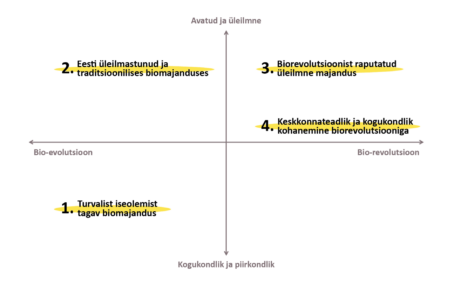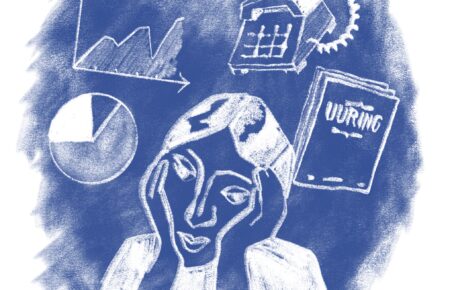
Interns column: a practical guide to micro-credentials and life-long learning

No doubt, “job hunting” is an arduous and unnerving process that fully lives up to its name. With an already over-competitive jobs market and widespread academic inflation, a global pandemic was the last thing that the current generation of job searchers needed. This perfect storm of unfavourable labour market conditions resulted in a staggering 18.9% youth unemployment rate in Estonia.
At the same time, employers often find themselves in an equally worrying position. While there is no shortage of applicants with university education, the majority of graduates lack the specific skills that employers demand. With four out of 10 EU employers struggling to find skilled workers even before the pandemic, EU businesses agree that the skill gap is one of the main issues their companies are facing.
While the current labour market outlook doesn’t exactly appear optimistic, a new trend in education might offer a much-needed solution. Having spent a good portion of this year studying this new trend, IBS is here to tell you everything you need to know about micro-credentials.
What exactly are Micro-credentials?
Micro-credentials (also known as micro-qualifications, nanodegrees, or MCs for short) are accredited short courses that certify competency in a specific skill or subject area. Think of MCs as a happy marriage between Coursera and on-the-job training – not only are micro-credentials meant to be accessible and flexible, they are also designed to be directly pertinent to industry demands. As our enthusiasm may suggest, the merits of MCs span far and wide.
Unlike traditional university degrees, MCs are short, cheap, and egalitarian when it comes to admissions requirements. But, more crucially, micro-credentials are malleable to particular career goals. Course options range from niche and technical to general and universal. Imagine yourself as an ambitious BSc Computer Science graduate competing for top-tier jobs that require special advanced software skills. Instead of reconsidering your life choices and frantically applying for master’s degrees, MCs enable you to take short modules filling in your knowledge gaps. Alternatively, picture yourself as a determined mid-career professional eying a managerial position. If the traditional route of spending a small fortune on a two-year MBA doesn’t seem appealing, why not take an MC in management and leadership to climb the corporate ladder? As the two examples illustrate, MCs can produce the ultimate bespoke education for every professional.
Moreover, micro-credentials empower workers to switch career paths painlessly. In the world of technological innovation sped up by the past year’s events, such opportunities are essential to ensure no worker is left behind. Short, sweet, and cheap MCs might be the Holy Grail of the fourth industrial revolution reskilling the economists have been searching for. Notably, micro-qualifications can be rapidly designed for nascent professions thus immediately responding to the labour market feedback.
It’s hard to deny the advantages of micro-credentials. Yet, it’s even harder to devise an educational framework for MCs. Fortunately, however, policymakers can learn a good deal from early adopters.
What are the different national micro-credentials systems?

In our quest to facilitate the implementation of micro-credentials in Estonia and beyond, we investigated how six countries approach the task. Our in-depth study of MC pioneers highlights three main approaches to establishing micro-credential systems:
- The Laissez-Faire Approach
As the name suggests, the first approach steers the responsibility of designing, teaching, and awarding MCs away from the government to universities and vocational training institutions. Imbued with the neo-liberal spirit, this approach relies on the market mechanisms to naturally select the most competent providers. This system goes easy on the budget and tends to be less bureaucratic. Yet, allowing institutions to define MC levels and requirements spells confusion amongst employees and employers alike. In fact, Australia, a prominent advocate of the approach, has considered switching to a more rigid system to minimise quality discrepancies and confusion.
- The Relaxed-monitoring Approach
Beyond the proverbial Wild West of micro-credential education lies a slightly more regulated approach. The government defines micro-credentials, outlines different levels, and sets general learning goals. The providers, in turn, use the set framework as a guide while retaining full responsibility in developing and assessing MCs. As such, the approach is akin to how most countries already handle university education. Not only do such systems minimise confusion over the quality and characteristics of MCs, but they keep bureaucracy to the bare minimum.
- The Quality-assurance Approach
Finally, at the opposite end of the MC spectrum lies the most interventionist approach. In addition to defining micro-credentials and stipulating completion requirements, some countries also assume the role of the assessment and quality control body. The government thus approves course curricula, oversees examinations, and awards provider licenses. As in the case of Ireland and Singapore, the two noteworthy examples of the system, approved MC courses, are listed in a government directory for easy access. With little in the way of ambiguity, such systems warrant quality to the employers for the hefty price of magnified red tape.
An Additional Task: Setting Target Groups and Incentives
Yet, selecting one of the above approaches is only the first step in the “build your own micro-credentials framework” exercise. In addition to setting up a national micro-credentials framework, countries must also decide whether to target certain professions or social groups. While relying on the market forces is a common approach, the state could also identify educational needs and provide financial incentives to target vulnerable groups. The main benefit of such an interventionist approach is, of course, its potential to lift social groups out of poverty, institute greater equality, and raise awareness amongst citizens who would otherwise shun MCs. On the other hand, this method is expensive and prone to various resource misallocations.
What to expect going forward?
While, as our findings illustrate, policymakers have quite a few practical questions to consider, it might not be long until we see widespread use of MCs in Europe and beyond. For that matter, the EU has already recognised the merits of MCs. In July 2020, the EU adopted the Skills Agenda for Europe which reinstated its commitment to support quality micro-qualifications throughout the member states. One of the main steps in promoting micro-credentials is the “inclusion of micro-credentials in national qualification frameworks.” This is, of course, a solid indication that MCs are here to stay.
While the Estonian education system, as it stands, does not provide a formal framework of recognition for MCs, there are also some positive developments on the national level. Not only did Estonia’s Education Strategy 2035 recognise life-long flexible learning as a key priority, but the Estonian Ministry of Education and Research is already exploring MCs as a tool to fulfil the objective. At the same time, some universities have already seized the initiative and began offering MCs to prospective students. Considering the ever-growing skills gap in the country and the high post-COVID youth unemployment rate, micro-credentials could imbue job searchers with a much-needed sense of hope for the future.
So while the paradoxical problem of unemployment and skills shortages may continue to haunt us in the near future, MCs are already driving a subtle revolution in education. Clearly, there is a lot to be optimistic about!
Darya Podgoretskaya
Intern at the Institute of Baltic Studies
Find out more about microcredentials from the IBS study report (in Estonian) “Mikrokvalifikatsioonide kasutuselevõtmise võimalused Eesti haridus-ja kutsesüsteemis rahvusvahelisele praktikale toetudes” (2021).
Cover picture: Mette Mari Kaljas (our collaboration with the young artist is supported by the National Foundation of Civil Society)
Second picture: Merike Paberits










